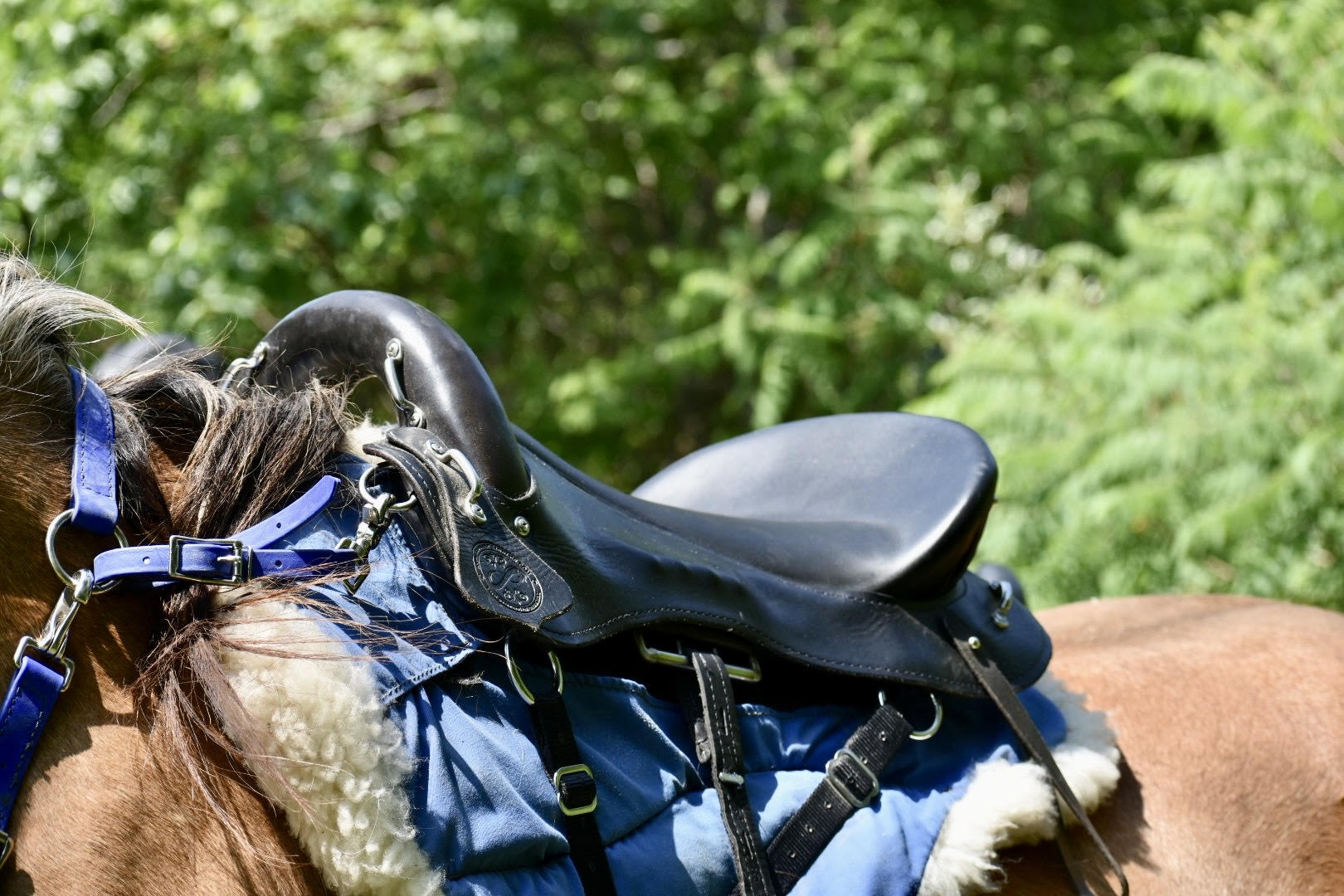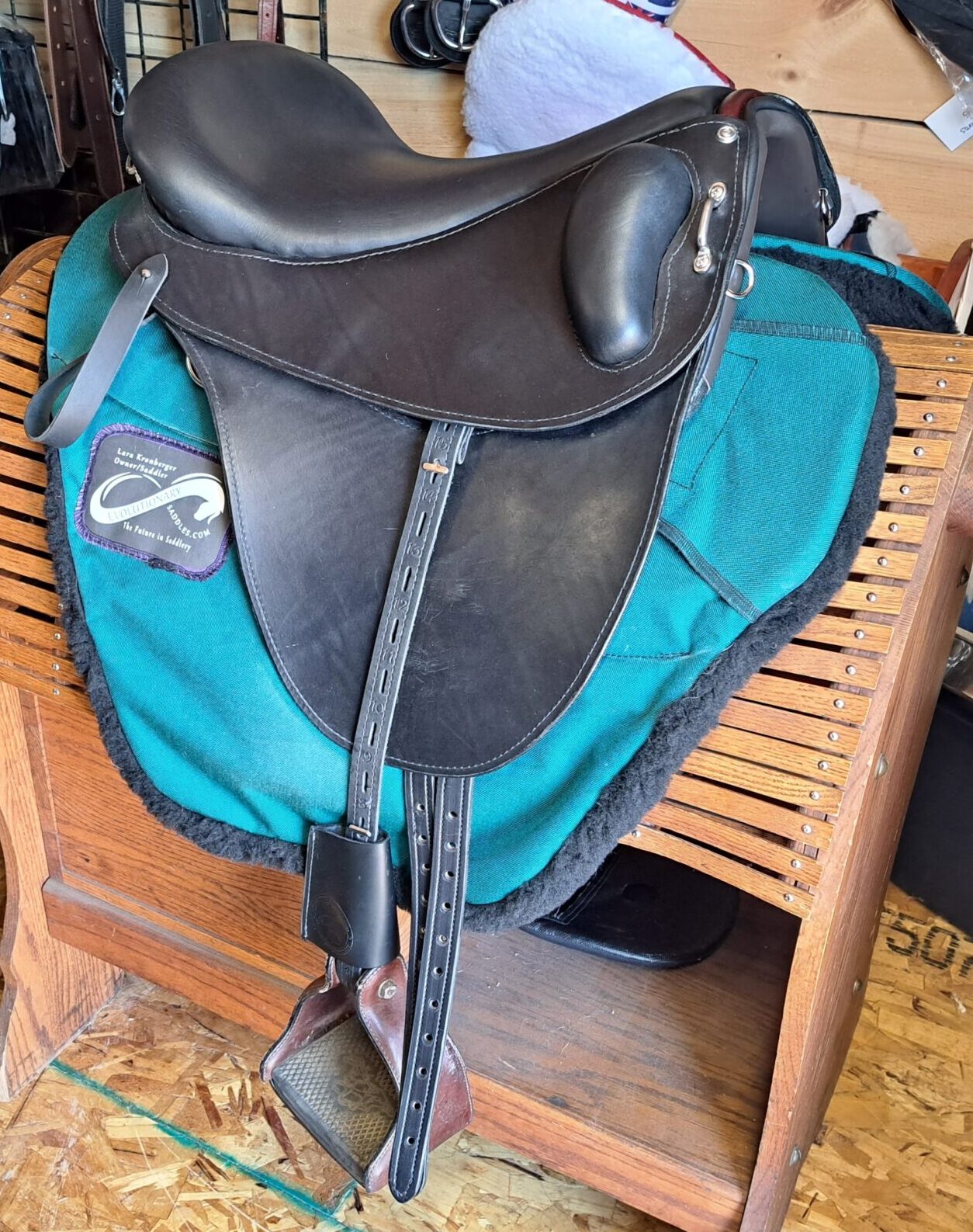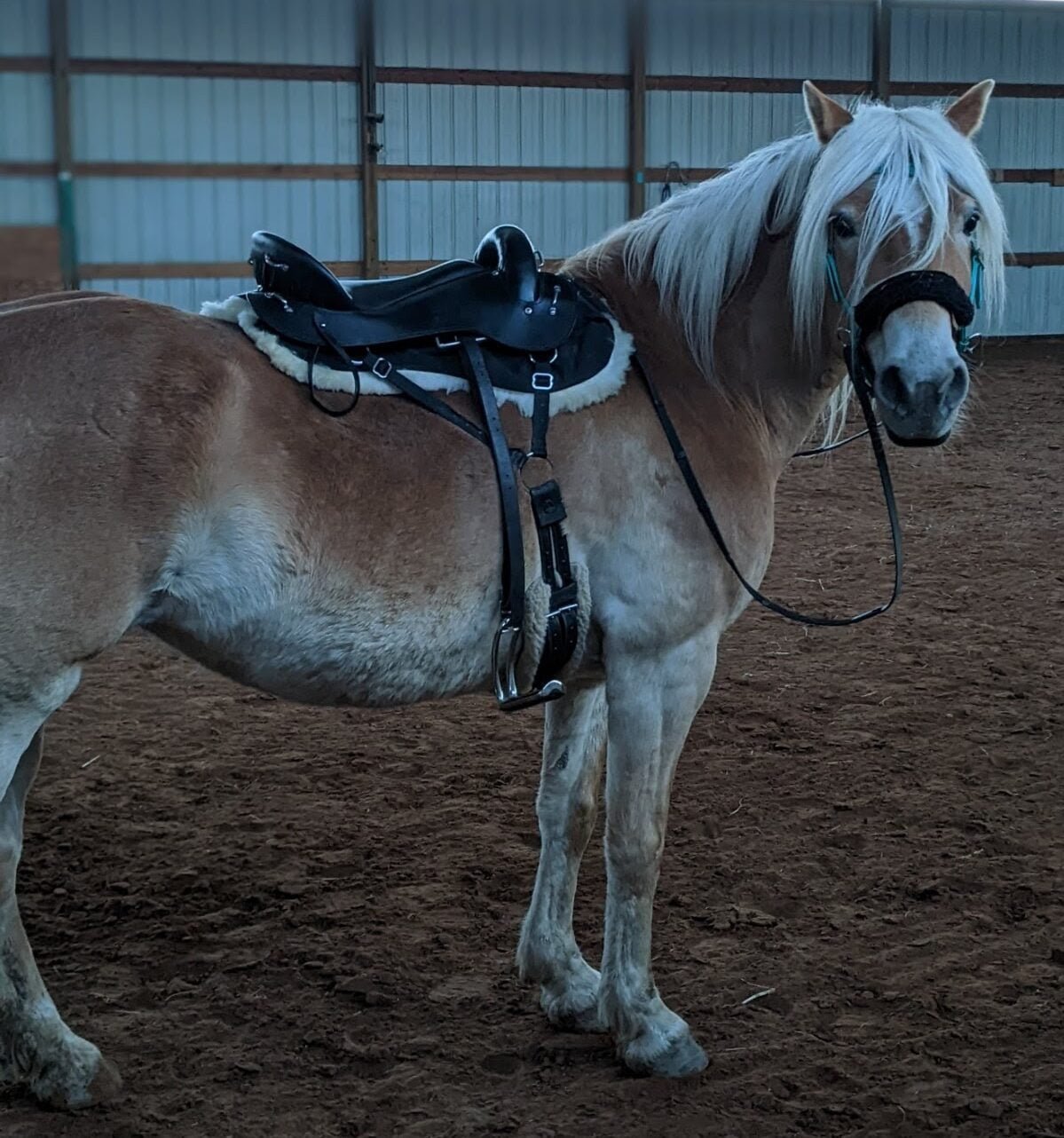
I have been there, wondering what are the options and how much am I going to have to spend on a saddle? How long will it fit before I am on the search again? What if it doesn’t fit me too?
How can the traditional saddling industry, cover all the variations of shape of our horses? Not to mention riders?! Truth is, they can’t.
At best, they offer only a handful of saddle tree patterns to choose from, then you and your horse must conform to those few choices. That is like saying that you must only select a pair of pants to wear from only 4 sizes.
Now that we have established the fundamental variation in horse backs, we still have the problem of how the shape of a horse changes with movement.
Finally, the same horse is continuously changing over the course of its life! As the result of growth, aging, training, conditioning, feeding, etc. its contours are constantly evolving.
This last point alone means you need to alter a production saddle or acquire a new saddle every six to twelve times over the course of a horse’s life. An investment for sure.
If all of this wasn’t bad enough, another structural problem now arises, the pressure load on the horse’s body resulting from the rider’s weight.
What does all that do to the horse?
As we know, excessive pressure damages the hair, skin and all of the tissues underneath. That is where the dry spots, white hairs and sometimes even open sores can occur, all from pressure.
Let’s take a look for example at an English saddle. An average English saddle has a supporting surface on the horse’s body of approximately 27 square inches. Then, we put another 165 lbs onto the saddle – the rider.
This gives us a load of 39 oz. per square inch. Acceleration, gravitation, etc. may at least double this value during movement, producing a load of 78 oz. per square inch.
Let’s repeat this calculation with a western saddle. An average western saddle has a supporting surface of 96 sq in.
Let’s take our 165 lb rider again, giving us a load of 28 oz. per square inch or 55 oz. per square inch during movement.
These values are valid for contact over 100% of the supporting area. As we know however, the horse alters its shape during movement, making this 100% completely impossible to attain.
Even if you add at least 1/4 to the load, your calculations will still be very much skewed in favor of the saddle. Now, think back to that 24 oz limit once again.
So for review, any activity that involves concussion (jumping, posting, etc.,) will effectively double or even triple the rider’s weight.
What is that doing to our pound per square inch?
Are we causing damage?
The only way to know is by palpation. You can see a video how to palpate your horse!
What are the options?
Is a flexible saddle tree an option?
This was out of the question, since it would not solve the basic problems of fitting the horse AND providing a stable seat for the rider.
It should not be like sitting on a sponge. But that would be the logical consequence if the saddle tree were to actually follow the horse’s movement.
Another effect would be a sagging of the tree, which would in turn concentrate the weight on certain points especially the spine The final point against the flexible tree was that it would not have a large enough supporting surface to meet our – or rather the horse’s – needs.
An adjustable saddle (bars & gullet)? Well yes, not such a bad idea but here again it would still be subject to the basic constraints of fitting it to the horse.
Also, any adjustment reaches a limit at some point, not to mention that in this case the “normal rider” is always dependent on assistance from others (saddle dealers). In addition, we did not want something that is calibrated but something that changes continuously.
First, because there are almost infinite variations among horses, but also because these variations are gradual and not divided into standardized sizes.
These comments also apply of course to these interesting variations of “saddle systems” that work with individually added padding.
The Option of Custom made saddles?
On the basis of all these considerations, we rejected the idea of custom made saddles from the beginning. Even a custom-made saddle can only, in the best-case scenario, fit the horse 100% in a standing position, and then only with respect to the horse’s present state.
A treeless saddle?
Also not such a great idea. With this, there is no need to take the traditional fit parameters into account. But there remains the problem of uneven, selective weight distribution.
And the added problem of the pressure load on the spiny processes, because a treeless “saddle” cannot keep this area clear.
Which is what makes the treeless saddle not the ideal to fit both horse and rider. Although a better option than saddle that doesn’t fit at all on a horse where a treeless at least allows them to move in some comfort.
Independence between fit for rider and fit for the horse!
A saddle in which the supporting surface is independent of the saddle tree, conforms to the widest variety of horses, then able to adapt to the horse during movement. Additionally is large enough to distribute the weight over an area that is more than sufficient.
Thus the purpose of a saddle. To offer the rider support while distributing the rider’s weight over a large surface area.
This was the beginning of the various systems that revolutionized the panel saddle.
With the System X there is a strong, inflexible tree as a “chassis” to give the rider the desired stability. Mounts are attached to this tree to connect it to the panels.
These mounts are shaped to allow the panel to move in all three dimensions (up, down, side-to-side)– independently of the tree! In order to guarantee that the weight is distributed over the whole panel, we have chosen a material that is very smooth and flexible – Delrin.
At the same time, it is strong enough to distribute the force over the entire surface. This was very important, because only in this way will it work as a whole.
Of course, there are many saddles “out there” that resemble these panels, where the panels give way in the front and behind, but they are not really able to actually distribute the weight.
All other saddles – whether flexible or traditional – have one thing in common: you ride these saddles on the bars of the saddle tree, which is the source of the problems.
Finally, let us repeat the calculations we have just done of the load per square centimeter [inch] on the horse’s back.
Our saddles have an average supporting area of 324 sq. in. This means that the calculations result in values of 20-40 oz. per sq. in.
And since our panels join in the movement, we don’t need to make any reductions in the supporting surface. We are obviously far below the 105-gram limit.
As you can see it is actually quite easy to build a saddle that is truly horse friendly.
Photo courtesy of Carlee Strack















